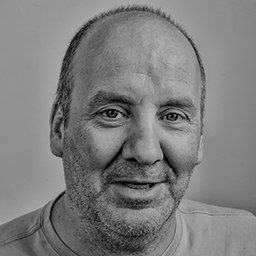
By MATTHEW HOLT
A long time ago in a different country, there was a landslide election from a population looking for change. And change they got. Americans had been campaigning for national health care since 1917. There had been failures in 1933 and 1946 and 1961. But in 1965 they got it. Sort of.
But a weird thing happened in the Congress. Out of the political sausage making came a plan that “Cared” for those over 65. While another plan came out that “Aid”ed the poor. (Stole that from the wonderful Adimika Arthur). Weirder still, the Medicare program was and is a Federally-funded program. The Medicaid program was a state-administered program, even though it was at least half funded by the Feds.
That meant that Medicaid was always vulnerable to the whims of states. Of course many states already had demonstrated dismal records in how they treated their poorer and minority populations in the past (think slavery, Jim Crow, KKK, separate schools, drinking fountains, buses…you get the idea).
So while Medicare became the savior program for anyone who made it to 65, and later for those who were disabled or had kidney disease, Medicaid was a program for poor people that then got treated poorly. (Stole that from Jonathan Cohn). And right now in 2025 it is under severe threat yet again.
Before we get to that threat, it’s worth looking at the program. Medicaid has evolved and now covers most nursing home care (for “poor” seniors), care for the disabled, and even pays Medicare Part B premiums for people too poor to pay their own. It also covers health insurance for poor people under 65 and in those states that accepted ACA Medicaid expansion, that’s a considerable number. Of course these are people under an imaginary line that makes them too poor to buy on the exchanges set up by the ACA. And usually Medicaid includes the CHIP program, an insurance program that covers poor children set up under Clinton in 1997.
This chart from the venerable KFF shows that while 75% of people on Medicaid are, poor, under 65, and not classified as disabled, 50% of the money goes to those who are not.

This all results in a bizarro world in which there is one Federal government program for people over 65 and the disabled, and then an entirely different state-based one, which spends 1/2 of its money on people who are over 65 and disabled and who are also in the Federal program. This is plain stupid and always has been.
Of course there is more to it than that.
Many states that don’t share that confederate heritage have done a lot with Medicaid. Oregon for example has always tried to increase coverage and spend money on community care in a different way. Physician and three time Oregon governor John Kitzhaber is very vocal about what they did before the ACA and how Medicaid should change to reflect these new realities.
Since 2012, under an 1115 waiver, Oregon Medicaid has been provided through new Coordinated Care Organizations (CCOs)— community-based organizations charged with providing quality medical care, while focusing also on community health. They operate on a global budget indexed to a per member per year a growth rate that is lower than medical inflation. CCOs are also required to maintain enrollment and benefits, while meeting rigorous metrics around quality, outcomes and patient satisfaction.During the first 5-year waiver period, Oregon enrolled an additional 384,000 people and operated within the per member per year growth rate. All CCOs met the required quality and outcome metrics, and realized a net cumulative savings of $1.1 billion.
In fact Oregon is by no means the only state that has done something different. California massively expanded coverage post the ACA and now 15m people or over ⅓ of its population is on Medicaid. Along with that, there has been a ton of experimentation within the program. Those 1115 Waivers, which are required to spend that Federal money in a way not envisaged in the 1965 Act have worked overtime in the Golden State on a state and county level. The overview is that Medicaid here has been changed into a more comprehensive program called CalAIM (California Advancing and Innovating Medi-Cal) which covers all kinds of things not in traditional Medicaid including doulas, community health workers ( who might also be barbers!) and in some counties housing and food.
Despite these improvements I wouldn’t suggest that you deliberately move to Oregon or California and become poor. (Stole that line from my late boss at Harris, Bob Lietman)
But there’s a ton more happening in Medicaid nationally. Since the 1990s most care has been steered into private health plans, although many are publicly run. But Centene and Molina especially have built very profitable business on Medicaid in a similar way to how United, Humana et al have mined Medicare Advantage.
And although not strictly speaking operating via Medicaid itself, we have also built out lots of other funding sources for safety-net providers. This includes the 340B program which hospitals use to make money on drugs, DiSH payments which go to hospitals who treat more of the poor, and then there’s about $35bn+ in federal funding to FQHCs which treat a lot of uninsured and Medicaid populations.
So we have built this incredibly bloated mess of a program. It is mostly administered by organizations that are commercial or county plans that don’t look like the plans regular employed Americans get their coinsurance from. Those plans purchase care from a network of facilities (FQHCs, county hospitals et al) that get much of their money from Medicaid, or use a bunch of other ways to raise funds. And those provider institutions don’t look much like or share much clientele with the regular doctors and health systems where most employed Americans or those on Medicare get their care.
And you thought separate but equal was abolished in the 1950s!
Now of course, Medicaid is under great threat, as in some ways is the ACA. The Trump Administration, featuring a South African immigrant wandering around with a literal and figurative chainsaw, has promised cuts. The most common number suggested is $880Bn over 10 years. Now that is a big chunk. $90B – the annual equivalent – is around 15% of Federal spending on the program. Of course this is a program that spends plenty in Red states, but of course plenty of that spending in red states is on black and brown people, and many white Trump voters don’t realize that it also covers plenty of their white political allies. Wendell Potter and Joey Rettino pointed out that given many states call it something different than Medicaid, it’s possible a bunch of Trump voting low-information voters in red states may not realize it covers them!
Even so a 15% reduction, in a program that is spread thin like peanut butter and already pays low fees to providers and nursing homes, will be trouble.
The other question is around regulation. Those ubiquitous 1115 Waivers allow lots of programs that aren’t in the original regulations, and of course getting or renewing a waiver from the new HHS and CMS may be tricky. For sure the Republicans are obsessed with making sure anyone on Medicaid is working. Those “work requirements” were rolled out in a few states during the last Trump Administration. They ended up saving no money, and were unnecessarily honorous. But given the desires of the current Administration to be as cruel as possible, it’s highly likely that ideology wins out here and work requirements or other silly shit may be imposed on every state.
So the current fight is going to be the Dems in blue states trying to keep Medicaid as is. Well see how that plays out, and whether the Trumpers can keep their thin majority together when some of them realize what it means.
But that’s not what we should be doing with Medicaid. Instead we should take the plunge that the Clintons tried to take but that Obama and the ACA ducked.
We shouldn’t reform or defund Medicaid. We should abolish it.
If instead we should use that Medicaid money to create a proper universal health care system, and put people on Medicaid on the same financial and delivery platform as Medicare and commercial insurance. Whether we do that in a multi-payer world as the Japanese and Germans do, a mostly single payer version like the French or Taiwanese or a nationalized system like the UK and Sweden, it would remove the second class health care status of the ⅓ of our citizens who don’t have Medicare or good private insurance. In addition, it would enable our clinical professionals to practice medicine the way they wanted to when they were young and idealistic, and not have to worry about how much each patient would pay, as they’d get the same amount no matter who they were treating.
Let’s get the political momentum going to argue for equal treatment for all in America, and not keep around a welfare program that emerged from a political mistake in 1965.
Matthew Holt is the Publisher of THCB
2025-05-06 20:56:03
















Leave a Reply